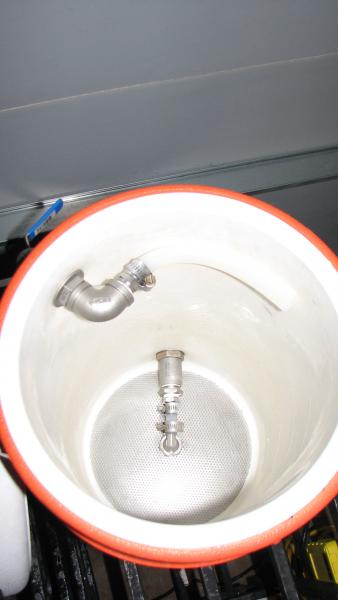Last weekend, I brewed a Belgian Pale Ale. I designed the recipe around my typical 75% efficiency. I had made a couple adjustments to my equipment over the past 6 months (namely, opening my BC back up to factory setting and switching to a false bottom in my round MLT). I've always felt that my sparge went quickly, but never paid much attention to the actual time. I decided to clock my sparge from beginning to end.
After I collected 26 qts of wort (a pre-boil volume I keep constant), I stopped the timer....14 minutes!
I gave the kettle a few good stirs, and took 4 gravity samples with my refractometer. The result was as expected; 76% efficiency.
The typical convention I have seen is that fly sparging should be a long, slow process. After this test, I think the real hook for lautering is fluid dynamics. To break that down even more, I really support having a coarse crush and an optimized seperation medium that make it as easy as possible for the wort to navigate through the grain bed.
So long story short, if you are finding your efficiency to be inconsistent or offensively low, take a good look at fluid dynamics, and then ask yourself if it seems like you are making it easy for the wort to get through the lauter process.
Thoughts?
Joe
After I collected 26 qts of wort (a pre-boil volume I keep constant), I stopped the timer....14 minutes!
I gave the kettle a few good stirs, and took 4 gravity samples with my refractometer. The result was as expected; 76% efficiency.
The typical convention I have seen is that fly sparging should be a long, slow process. After this test, I think the real hook for lautering is fluid dynamics. To break that down even more, I really support having a coarse crush and an optimized seperation medium that make it as easy as possible for the wort to navigate through the grain bed.
So long story short, if you are finding your efficiency to be inconsistent or offensively low, take a good look at fluid dynamics, and then ask yourself if it seems like you are making it easy for the wort to get through the lauter process.
Thoughts?
Joe



